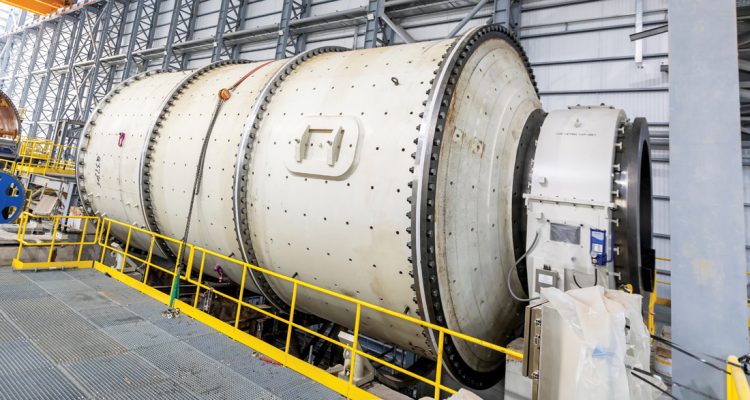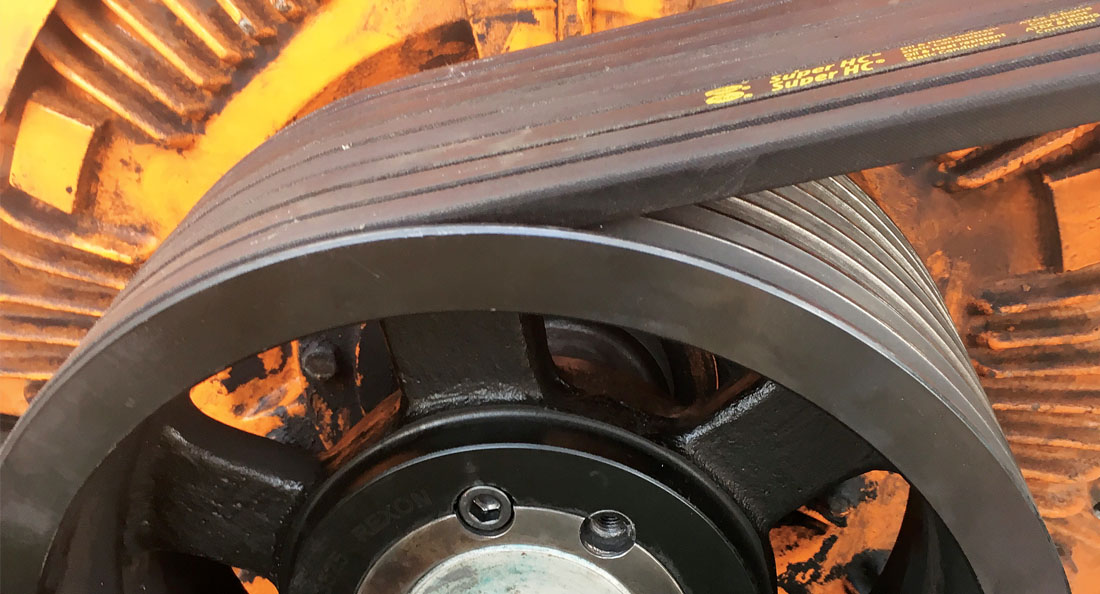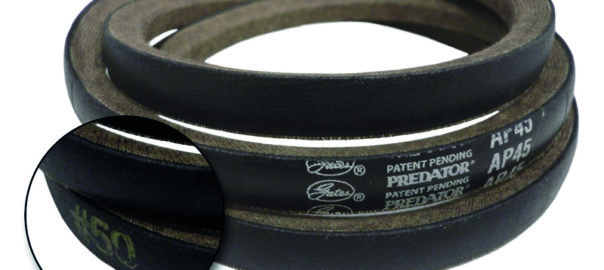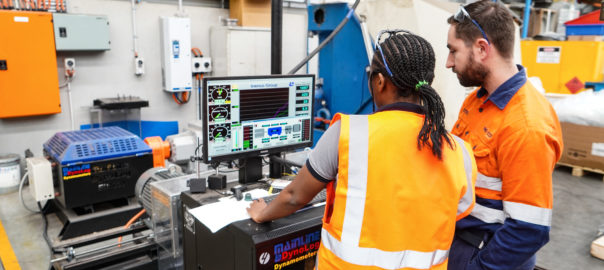The use of rotating grinding mills in mining has made a considerable impact on the efficiency of raw material breakdown. As the most common type of grinding machine on Australian mining sites, they consist of an rotating drum mounted on two large‑scale bearings at either end.
Inside this drum are several differently sized steel balls, which harness the rotation of the machine to impact and agitate the grinding balls and ore with water to grind down the rock into a slurry. The rotating drum is set on a slight angle, so the material goes in one end, and migrates its way down to the other, where it is then pumped to the mineral separation plant for further processing.
Eddie Lawrence, Regional Hub Manager at WebsterBSC, has experience working with one of Australia’s longest running underground mine sites and processing facility, 85 years to date with a bright future ahead. He has been asked to investigate if the low-speed ball mill coupling can be upgraded with no change to the current boundary dimensions of the ball mill and gearbox location.
“I have been working alongside this customer for about 15 years, both on site and remotely to deliver engineering support as well as general product supply,” Eddie says. “I do regular site visits every three months to carry out things like bearing audits, gearbox and v-belt drive analysis and hydrocarbon grease recommendations, so when they contacted me about updating their low speed ball mill coupling, I already had a good understanding of their needs.”
According to Steve Hittmann, National Product Manager for Mechanical Drives at Motion Australia, the customer’s primary concerns were accessible maintenance and reliability, so they were supplied with Timken’sQuick-Flex® Couplings as a longer-term solution. These components are distinguished by their lubrication-free design, along with customisable cover and insert configurations.
“The customer was using very old technology that had been developed in the 1960s, which was making it difficult for them to source replacement parts,” says Steve. “This was proving expensive and time consuming, which is why we suggested a more contemporary solution. We’ve put in the latest technology, so all the necessary spare parts are now readily available off the shelf.”
“We opted for a standard high speed split cover to generate maximum torque rating and ease of fitment,” Eddie elaborates. “Essentially it is an easy solution, with less moving parts that could potentially wear. They are easy to install, and designed to withstand harsh conditions – a vital factor for any mining application.”
In this particular application, the coupling works to connect the main gearbox to the ball mill itself, on the low speed side of the gearbox. Once the hubs are mounted in position, they don’t need to be moved on the shaft for the driver element replacement, leading to downtime savings.
“These couplings have high tortional flexibility, which means they can absorb continual shock, vibrational loads, and sudden overloads,” explains Steve. “A ball mill is kind of like a large, heavy tumble dryer – but instead of clothes you have heavy raw material being broken down from repeated impact.”
An additional key benefit to the Quick‑Flex solution is increased safety during maintenance or change-outs. Steve says that in keeping with industry regulations, mining company’s plants stand to benefit from less crane lift requirements, lighter consumable components and element change outs that need less personnel to conduct an inspection or change out.
“In comparison to the customer’s old set-up, which had several nut and bolt connections that had to be handled in order to carry out a repair, the Quick-Flex® offers less downtime, no need to handle coupling components with old grease, and minimised hazards to employees.”
Furthermore, the unique layout of the coupling decreases the impacted surface area, isolating the ongoing wear to a singular, detachable part, the polyurethane element.
“The lifespan of these couplings is bolstered due to their smart design. There is no metal-to-metal contact, because the hub’s ‘teeth’ are joined by a polyurethane element. That is the only part that will ever wear, and so the only part that requires replacing.”
Use of the Quick-Flex® couplings offers cost-effective inventory standardisation, as they are compatible with all regular high and low torque applications. They accept misalignment up to two degrees, and can safely replace existing jaw, grid, gear, chain, and tyre couplings.
Where intensive washdown procedures are required, the Quick-Flex® range is also available in stainless steel. Optimised for high-speed settings, each unit is inherently balanced from precision machining and performs at continuous torque levels of 43Nm to 610.5 kNm.
“The customer has been extremely satisfied with our integration of these couplings,” says Eddie. “This coupling has been running now for 12 months without failure, so they are certainly demonstrating their worth on the ball mill equipment, of note, recently this same coupling was designed in for another demanding high torque crushing application which is also proving reliable.”
Although these couplings are designed for streamlined installation, and can handle minor misalignment, Eddie points out the value in consulting with a Webster BSC representative to assess and offer insight on the specific design integration. He reflects on Motion Australia’s long history offering servicing and support in conjunction with Timken’s technical team, noting the benefit of this collaborative approach.
“Our relationship with Timken as a supply partner has been integral to our success for a long time. Since I have been with Motion Australia, we have collaborated on many projects within the mining sector, and worked extensively with their engineering design hub to deliver premium support to our widespread customer base.”




